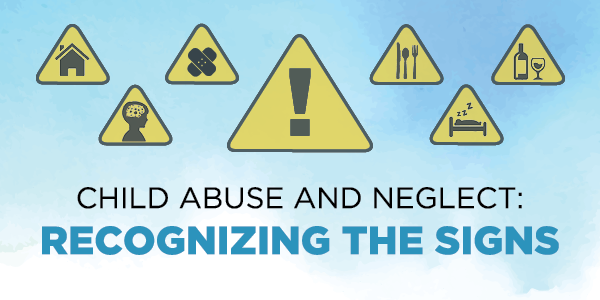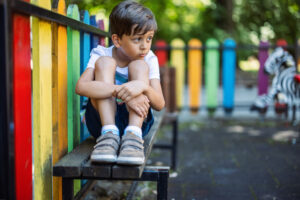Recognizing the Signs of Child Abuse and Neglect

Child abuse is an epidemic that can happen anywhere and to anyone. It occurs in several different forms including physical, emotional, verbal or mental abuse, sexual assault or neglect. Everyone has a role to play in ensuring children are safe and protected. We encourage family members, neighbors, educators, caregivers and entire communities to recognize the signs below and report if a child is being abused or neglected. You can also download this one-page sheet with all the signs to help you recognize child abuse and neglect.
Understanding Different Types of Abuse
 Child abuse and neglect contribute to a real, ongoing health crisis in the United States and worldwide.
Child abuse and neglect contribute to a real, ongoing health crisis in the United States and worldwide.
Adverse childhood experiences can have a long-term effect on the health of a young individual and can continue into adulthood if the situation is not properly addressed.
Current data show that of the 3.1 million child abuse cases investigated, 76% were victims of neglect, 16.5% were physically abused, 9.4% were sexually abused and 0.2% were victims of sex trafficking. With this information, it’s clear that many forms of abuse are prevalent. Here are the most common types of child abuse:
- Emotional abuse: Mental or emotional abuse typically aims to impact a child’s well-being, self-esteem and self-worth. This can include name-calling, rejection, withholding affection, shaming, diminishing, emotional manipulation or threatening a child.
- Neglect: Abandonment and neglect involve a caregiver or family member withholding basic needs. These needs can be physical or emotional, like food, clothing, shelter, education or medical care.
- Physical abuse: Physical abuse is typically categorized as intentional and physically hurtful actions, resulting in the injury of the child. Hitting, kicking, burning, shaking and other forceful actions are examples of physical abuse.
- Sexual abuse: Sexual abuse is defined as intentionally forcing a child to engage in (or exposing a child to) sexual acts, including penetration, fondling and exposure of body parts. Unwanted sexual touch is also sexual abuse.
Signs of Child Abuse and Neglect:
 Unexplained injuries
Unexplained injuries
Burns, cuts and bruises are visible signs of physical abuse. Explanations for these injuries may be unconvincing.

Changes in behavior
Abused children often appear anxious, aggressive, depressed, withdrawn or scared. Some may return to earlier behaviors such as wetting the bed or express an irrational fear of strangers or the dark.
 Fear of going home
Fear of going home
Abused children may display anxiety about leaving school or going somewhere alone with the abuser.
 Changes in eating
Changes in eating
Fear and stress can alter an abused child’s eating habits, resulting in gaining or losing weight.
 Changes in sleeping
Changes in sleeping
Abused children may appear tired, have difficulty sleeping or experience frequent nightmares.
 Changes in school performance
Changes in school performance
Abused children have difficulty concentrating and have frequent absences that can often be attributed to parents trying to hide the child’s injuries.
 Lack of personal care or hygiene
Lack of personal care or hygiene
Abused and neglected children may appear dirty, uncared for and lack suitable clothing for the weather.
 Risk-taking behaviors
Risk-taking behaviors
Older youth who have experienced abuse may begin experimenting with drugs or alcohol.
 Inappropriate behaviors
Inappropriate behaviors
Children who have been sexually abused may display sexual behavior or explicit language.
If you suspect a child is being abused or neglected, call 1-800-352-6513.
![]()
KVC West Virginia is a private, nonprofit organization dedicated to strengthening families and preventing child abuse and neglect. Our team of caring experts delivers a range of essential services, including in-home family support, foster care, adoption, in-home mental health therapy, and youth educational support – all to fulfill our mission of enriching and enhancing the lives of children and families. Learn how you can help children heal from child abuse and neglect as a foster parent.
